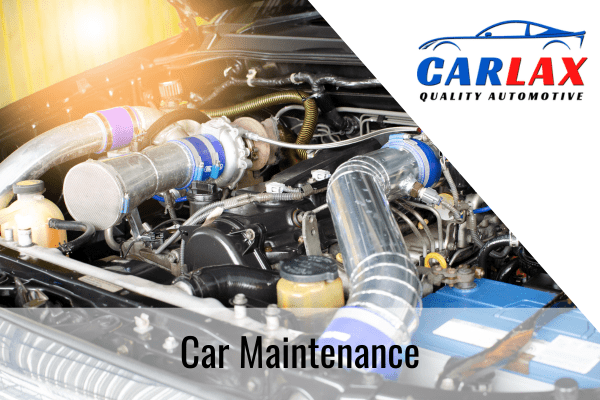How often should you get your car maintenance?
Routine vehicle maintenance keeps you and your family safe and prevents unexpected breakdowns. You'll also reap the rewards at the pump, as a well-maintained car is usually more fuel-efficient. But how often should you get your car maintenance done?
Recommended Frequency and Schedule
You can find specifics about how frequently to service your car in your owner’s manual. Generally, however, take your vehicle for minor servicing once a year or every 12,000 miles, whichever comes first.
Major servicing, i.e., replacing your power steering fluid and timing belt, should follow a 30-60-90 schedule — in other words, every 30,000 miles.
Some specific examples of how frequently to complete different maintenance tasks are as follows:
- Oil change - Every 3,000 to 10,000 miles
- Brakes - Between 5,000 and 7,000 miles or six months
- Brake fluid flush - Every two years
- Air filter replacement - Every 12,000 to 15,000 miles
- Spark plug replacement - Between 30,000 and 100,000 miles
- Cabin air filter replacements - Every 15,000 to 30,000 miles
- Timing belt replacement - Between 60,000 and 100,000 miles
- Transmission fluid change - Every 20,000 to 60,000 miles
- Fuel system - Every 3,000 to 7,000 miles (add cleaners/additives)
- Steering system flush - Every 30,000 miles
- Drive belt - Between 60,000 and 70,000 miles
- Tire rotation - Every 6,000 to 8,000 miles
- Wheel alignment - Once a year
- Radiator flush - Between 50,000 and 60,000 miles or three years
Factors That Determine How Often You Should Get Your Car Maintenance Done
While how many miles is one of the main considerations because the components tend to wear from use, other potential factors to consider include:
- Vehicle's age (older ones need more care)
- Your driving habits
- Type of automobile
- Climate
- Technological features on your vehicle
- Fuel quality
Why Summer Is an Ideal Time for Maintenance?
When you opt for car servicing at the end of summer, you can stay on top of maintenance and handle any concerns from heavy usage throughout the season.
For instance, driving on hot roads is rough on the tires and can lead to the tread separating or sidewall cracking. And the distance alone can cause uneven wear or reduced traction.
The high temperatures are known to damage the internal rubber components, which could lead to them cracking. Eventually, a cracked radiator hose, for instance, may lead to more serious issues in the future, such as overheating.
That's not all, either. Other examples of summer usage issues are as follows:
- Battery corrosion
- Low fluid levels
- Clogged air filter
Moreover, especially if you're a parent, you know autumn is like starting a new chapter as strict routines and extracurricular activities begin. As a result, you may place vehicle maintenance on the back burner as other aspects of life take precedence.
By prioritizing a maintenance visit before autumn, you won't forget later on and face an unforeseen problem down the line.
While the answer to 'How often should you get your car maintenance performed?' varies based on your vehicle and miles, a rule of thumb is once per year. And the end of summer, before you settle into your fall routine, is an excellent time to schedule a check-up.
To know more about how often should you get your car maintenance? Contact our ASE-certified technicians at Carlax Quality Automotive for more information about our vehicle maintenance and to schedule an appointment. Our auto shop serves vehicle owners in Palmdale, CA, and the surrounding areas.
Wondering how often should you get your car maintenance? Ask the auto repair specialists about the recommended vehicle maintenance.
Routine vehicle maintenance keeps you and your family safe and prevents unexpected breakdowns. You'll also reap the rewards at the pump, as a well-maintained car is usually more fuel-efficient. But how often should you get your car maintenance done?
Recommended Frequency and Schedule
You can find specifics about how frequently to service your car in your owner’s manual. Generally, however, take your vehicle for minor servicing once a year or every 12,000 miles, whichever comes first.
Major servicing, i.e., replacing your power steering fluid and timing belt, should follow a 30-60-90 schedule — in other words, every 30,000 miles.
Some specific examples of how frequently to complete different maintenance tasks are as follows:
- Oil change - Every 3,000 to 10,000 miles
- Brakes - Between 5,000 and 7,000 miles or six months
- Brake fluid flush - Every two years
- Air filter replacement - Every 12,000 to 15,000 miles
- Spark plug replacement - Between 30,000 and 100,000 miles
- Cabin air filter replacements - Every 15,000 to 30,000 miles
- Timing belt replacement - Between 60,000 and 100,000 miles
- Transmission fluid change - Every 20,000 to 60,000 miles
- Fuel system - Every 3,000 to 7,000 miles (add cleaners/additives)
- Steering system flush - Every 30,000 miles
- Drive belt - Between 60,000 and 70,000 miles
- Tire rotation - Every 6,000 to 8,000 miles
- Wheel alignment - Once a year
- Radiator flush - Between 50,000 and 60,000 miles or three years
Factors That Determine How Often You Should Get Your Car Maintenance Done
While how many miles is one of the main considerations because the components tend to wear from use, other potential factors to consider include:
- Vehicle's age (older ones need more care)
- Your driving habits
- Type of automobile
- Climate
- Technological features on your vehicle
- Fuel quality
Why Summer Is an Ideal Time for Maintenance?
When you opt for car servicing at the end of summer, you can stay on top of maintenance and handle any concerns from heavy usage throughout the season.
For instance, driving on hot roads is rough on the tires and can lead to the tread separating or sidewall cracking. And the distance alone can cause uneven wear or reduced traction.
The high temperatures are known to damage the internal rubber components, which could lead to them cracking. Eventually, a cracked radiator hose, for instance, may lead to more serious issues in the future, such as overheating.
That's not all, either. Other examples of summer usage issues are as follows:
- Battery corrosion
- Low fluid levels
- Clogged air filter
Moreover, especially if you're a parent, you know autumn is like starting a new chapter as strict routines and extracurricular activities begin. As a result, you may place vehicle maintenance on the back burner as other aspects of life take precedence.
By prioritizing a maintenance visit before autumn, you won't forget later on and face an unforeseen problem down the line.
While the answer to 'How often should you get your car maintenance performed?' varies based on your vehicle and miles, a rule of thumb is once per year. And the end of summer, before you settle into your fall routine, is an excellent time to schedule a check-up.
To know more about how often should you get your car maintenance? Contact our ASE-certified technicians at Carlax Quality Automotive for more information about our vehicle maintenance and to schedule an appointment. Our auto shop serves vehicle owners in Palmdale, CA, and the surrounding areas.


